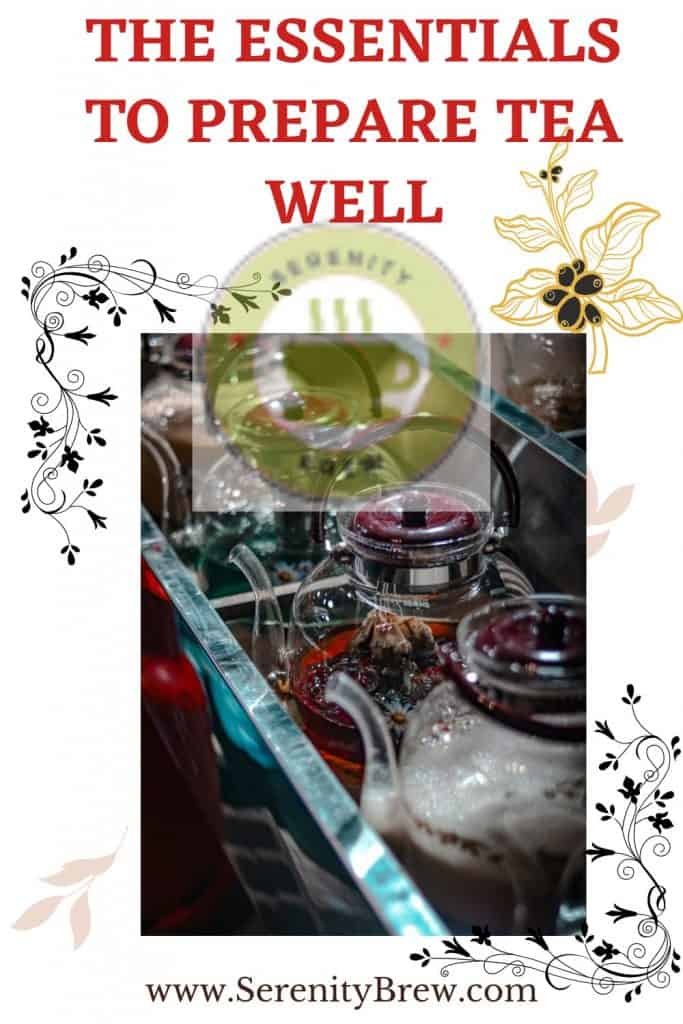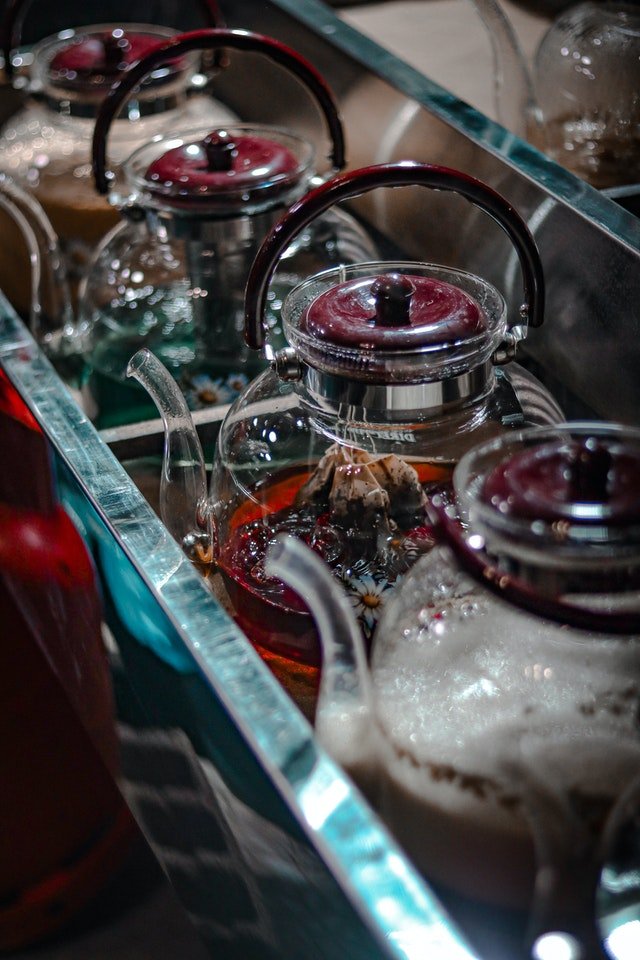
If you want to become a true expert when it comes to preparing tea, this is the article you were looking for. We will tell you everything essential to prepare and drink tea well.
Although we know that each person has their own tastes, we will give you some basic recommendations to leave even the most purists open-mouthed. Are you prepared ?
What should be taken into account when preparing and drinking tea well?
Before entering fully into the theme of the day, it is convenient to review together some things that, for example: what variables influence the preparation of tea.
The first thing you should consider before getting down to work is what variety of tea you want to prepare. A black tea is not the same as a white one, or an aged pu-ehr than a yellow tea. Each tea has its little tricks to get the most out of it.
And with tricks we mean a certain amount of tea, a suitable water temperature and, also, the infusion time. That’s why before you do anything, even get the kettle out of the cupboard, you should take a minute to educate yourself about the tea you’re going to make.
Second, you should keep in mind that the utensils you use to prepare your tea can also affect its flavor. Did you know that porous materials absorb flavors and aromas? Thus, if you use a clay pot, it is possible that your tea acquires nuances from previous infusions. The best? Opt for glass kettles… And if you don’t have any, don’t worry: a stainless steel pot will also do the trick.
Another issue to consider is the hardness of the water in the area where you live. Why? Simply because the lime can affect the final flavor of the infusion. Far from paying attention to the myth that using tap water damages the infusion, we recommend decalcifying the water if it is hard. We do not recommend using mineral water, as its minerals can also change the final flavor of your tea.
Finally, consider having a watch (or your mobile) handy to control the rest time of the tea. This is important so your tea doesn’t develop off-flavors. Now yes, we are going to see tricks variety by variety.
How to prepare white tea well
As always when we talk about tea, the recommendations vary from one expert to another. Although some maintain that the water is boiled for all kinds of tea, we base ourselves on the recommendations provided by the Spanish Association of Tea and Infusions.
White tea is a delicate tea, without oxidation, and therefore you must pay special attention when preparing it, since a mistake could ruin the experience. Although there are many varieties of white tea, their preparation does not change significantly.
You should consider that its flavor is soft, subtle, with many slight and complex nuances. For this reason, it is extremely important that you use water that does not affect its taste. Opt for soft water and heat it between 60 and 80 ºC. However, this depends on your tastes. In any case, do not exceed 80 ºC so that it does not develop astringency.
Before heating the water, measure the amount of tea you will use. The general recommendation is between 1 and 1.5 teaspoons (about 2 and 2.5 grams of tea) per cup. Once you have prepared the amount, you can start heating the water.
Follow this recommendation to be very attentive to the temperature of the water. In fact, if you have a tea thermometer at home, it’s time to use it. And if not, you already know what kettle gadget to order for your birthday or Christmas.
Once the water has reached the ideal temperature, add the white tea leaves and let infuse between 3 and 7 minutes, depending on the manufacturer’s instructions.
The perfect cup of yellow tea
This variety is quite rare and not easy to get. In addition, its price is usually high. It is also a delicate tea and, therefore, its preparation is very similar to that of white tea.
The only change that would apply is the decrease in sleep time. In the case of yellow tea, we recommend infusing between 2 and 5 minutes.
green tea, step by step
Greens make up a large family of teas, there are hundreds of varieties. Therefore, it is best to follow the manufacturer’s preparation instructions.
However, in general terms, you can consider green tea to be a slightly oxidized tea; therefore, you can consider it delicate. Although it does not have the same level of delicacy as the previous varieties, water that is too hot can damage its nuances.
Why does this happen? Very easy: tea leaves have substances called tannins inside. These are responsible for the sensation of bitterness that we perceive in the mouth. The higher the temperature, the greater the development of tannins and, therefore, the greater the bitter taste.
To avoid this, it is important that you never exceed 85 ºC when preparing your cup of green tea. In fact, the ideal would be to use water at 70ºC but, of course, this will depend on your tastes.
As for the quantity, between 2 and 4 grams of tea per cup are calculated, depending on the chosen green tea, and an infusion of between 30 seconds and 2 (maximum 3) minutes.
The perfect red tea
Pu-erh is a tea that could also be considered delicate, especially in the case of matured ones, since the fermentation process to which it is subjected modifies its properties. For this reason, its flavor and aroma are different from everything you know.
Now, there are two varieties of pu-erh: young and matured. These are presented in sheets or in cakes or bricks. Although this last option is usually the usual presentation of aged red teas, there are young tea cake options on the market. In any case, you must keep in mind that its presentation will vary the amount of tea you will need to prepare your cup. Read the manufacturer’s instructions before getting down to business.
If you are lucky enough to be able to brew an aged red tea cake, separate a 4-5 gram chunk per cup from the block. Be very careful not to cut or damage the cake: you just have to separate a piece, pricking it with the help of a point (an awl or a knife).
Put the tea in an infuser and then in a cup. Add hot water (not boiling) and let the cake hydrate for a few seconds. Remove from the water and discard it. Now it’s time to infuse.
Heat the water to between 90 and 95 ºC. Let the tea steep in the water for 2-4 minutes, depending on how you like your tea. For a lighter drink, make a shorter brew.
Now, what if the cake is young pu-erh ? In that case, lower the temperature of the water to 85ºC and the infused to a maximum of 3 minutes, to prevent it from becoming bitter.
If, on the other hand, you have loose leaves, use 3 grams per cup, and follow the instructions above about the temperature of the water and the infusion. In this case, the rest could increase up to 5 minutes.
Brewing blue tea at home
Blue tea or oolong tea is a partially oxidized variety that can be closer to a green tea or a black tea depending on the type. Its flavor varies between fruity, woody and even dried fruit. As you can see, it is the family of teas that is most difficult to pigeonhole.
These differences between one oolong and another also influence the preparation. If we always recommend reading the manufacturer’s instructions, in this case it is essential.
In the case of the oolongs closest to green tea, the infusion temperature should be between 80ºC, while those that are more similar to black tea could rest in water at around 90ºC. The times, of course, will depend on the class but they are around 3 minutes.
How to drink black tea well

It’s time to talk about tea with increased oxidation. As with the other types, there are many different black teas. As a general rule, there is talk of infusing 4 grams of black tea for each cup of water. Although the amount may vary, it is not advisable to exceed the same amount as the intensity of this tea could overwhelm your senses.
Black tea needs more heat to secrete its flavor and aroma. So, heat the water to between 90 and 95º C. If before we told you to control not to exceed the temperature, in this case we remind you to control that the temperature is not lower than 90º C, since water that is too cold does not extract the maximum potential of this tea.
Rest time ranges from 60 seconds to 4 minutes, depending on the manufacturer’s directions and your own personal taste.
Now you have no excuses not to prepare your favorite tea at home. Pay attention to these tips and enjoy a perfect cup of your favorite tea.
